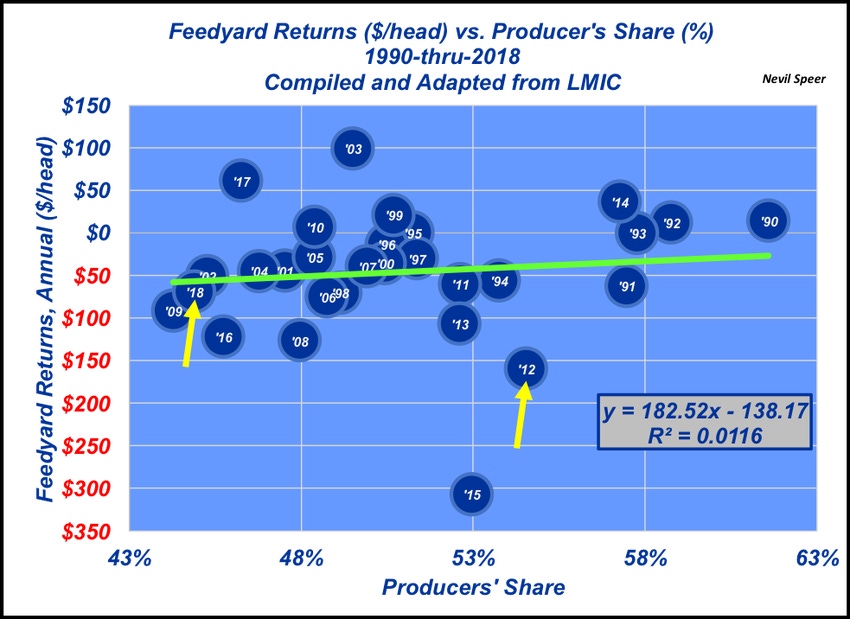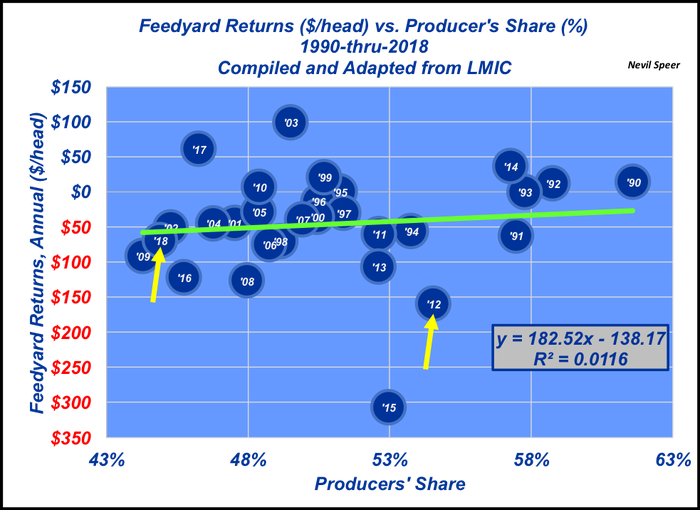Feedyard returns vs. producers’ share of the retail dollar
Does fed cattle profitability hinge on producers’ share of the retail dollar. Short answer: No.
May 8, 2019

Last week’s Industry At A Glance focused on the issue of producers’ share of the retail dollar. Producer share refers to the feeding sector’s general proportion of the retail dollar; it equals the value of a fed steer/heifer as a percentage of total retail revenue generated per animal. That discussion is an outshoot of some recent coverage of international trade in the beef industry.
The key take-aways from last week’s discussion are:
The five-year average for producer share remains at nearly 49% - in line with the long-run trend going back 20 years.
For a variety of reasons, producer share is inherently ambiguous and can lead to errant conclusions regarding the current status of the industry. To that end, Glynn Tonsor, Kansas State University, discourages, “…sole focus on this statistic [producer share] as it is easily misleading.”
Nevertheless, the concept of producer share has become an important topic amidst industry attention surrounding 2018’s new export record exceeding $8 billion. Most notably, one organization argues that touting export accomplishments is disingenuous given the fed market in 2018 averaged $117 versus roughly $123 in 2012.

Therefore, it’s not really helping producers and the organization points out, “The producers' share of the retail beef dollar was 52.2% back in 2012. In 2018, with record exports and increased beef demand, the producers' share shrank to less than 44%.”
Last week’s graph highlighted the long-run trends with producer share and the fed market. This week’s graph highlights the relationship between producer share and feedyard returns.
Additionally, the graph highlights comparison between 2012 and 2018. Several things are important in the graph:
Producer share was actually 54% in 2012.
More important than overall market comparisons between 2012 and 2018, feedyard returns netted $160 loss per head in 2012 versus an average loss of $70 in 2018.
Most significant, going back to 1990, the relationship between producer share and feedyard returns is essentially zero. In other words, producer share is meaningless when it comes to explaining profitability for cattle feeders who conduct business as margin operators.
Speer serves as an industry consultant and is based in Bowling Green, Ky. Contact him at [email protected]
About the Author(s)
You May Also Like




.png?width=300&auto=webp&quality=80&disable=upscale)
